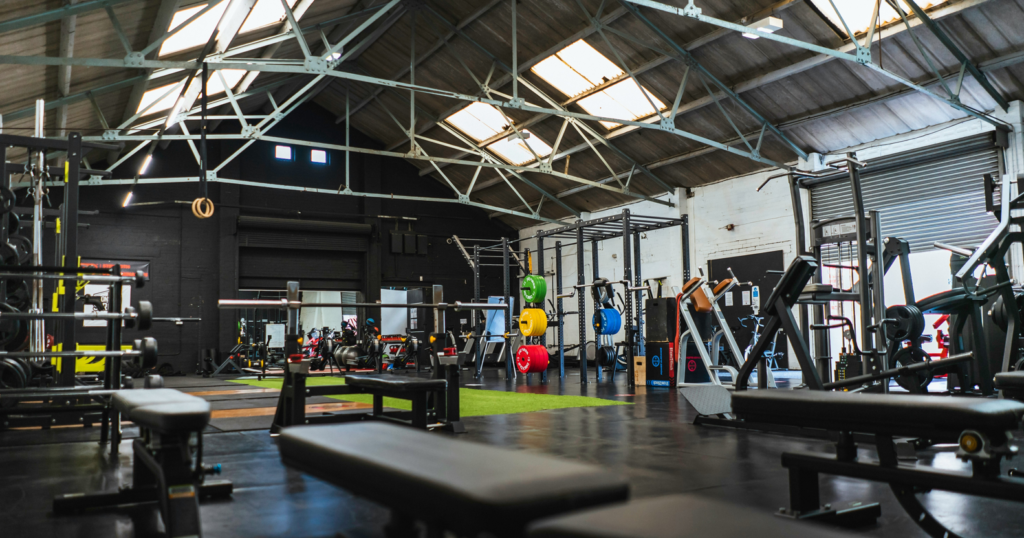Stepping into a gym for the first time can be a daunting experience. The clanking of weights, the hum of treadmills, and the sight of seasoned gym-goers can be intimidating.
Many of us have faced gym anxiety at some point. Whether you’re a newcomer or someone returning after a break, feeling out of place is completely normal. However, the benefits of regular exercise are immense, and with the right strategies, you can overcome this anxiety and build confidence in the gym. In this blog post, we’ll explore effective strategies to feel more comfortable, how to navigate gym equipment, and the importance of setting realistic goals.
Strategies to Overcoming Gym Anxiety
1. Start with a Plan: Having a clear plan can significantly reduce anxiety. Before heading to the gym, outline what you want to achieve during your session. This plan could include which exercises to perform, the number of sets and reps, and how long to spend on each activity. A structured plan not only provides direction but also eliminates the uncertainty of wandering around aimlessly.
2. Visit During Off-Peak Hours: Gyms tend to be less crowded during off-peak hours, typically mid-morning or early afternoon. Visiting during these times can make the environment less intimidating, giving you more space and time to familiarise yourself with the equipment and routines.
3. Wear Comfortable Clothing: Dress in workout attire that makes you feel confident and comfortable. Proper gym clothes not only enhance your performance but also boost your confidence. Remember, everyone is at the gym for their own fitness journey, so wear what makes you feel good.
4. Bring a Friend: Having a workout buddy can provide moral support and make the experience more enjoyable. A friend can offer encouragement, help you stay motivated, and provide a sense of security in an unfamiliar environment.
5. Focus on Yourself: It’s easy to feel self-conscious and compare yourself to others in the gym. However, it’s important to remember that everyone is at different stages of their fitness journey. Focus on your own progress and celebrate your achievements, no matter how small.
6. Seek Professional Guidance: If you’re unsure where to start or how to use certain equipment, consider booking a session with a personal trainer or online coach. A trainer can guide you through exercises, demonstrate proper form, and create a personalised workout plan tailored to your goals and fitness level.
How to Navigate Gym Equipment
1. Understand the Basics: Most gyms are equipped with a variety of machines, free weights, and cardio equipment. Familiarise yourself with the different sections of the gym. Typically, cardio machines like treadmills, ellipticals, and bikes are located in one area, while weight machines and free weights occupy another.
2. Start with Simple Machines: For beginners, machines can be less intimidating than free weights. Machines are designed to guide your movements, which can help you learn proper form and reduce the risk of injury. Start with basic machines like the leg press, chest press, and seated row.
3. Learn Proper Form: Proper form is crucial for preventing injuries and maximising the effectiveness of your workouts. Many machines have instructions on them, or you can ask a gym staff member for a demonstration. Alternatively, online tutorials and fitness apps can provide valuable guidance.
4. Gradually Introduce Free Weights: Once you’re comfortable with machines, consider incorporating free weights into your routine. Free weights, such as dumbbells and barbells, offer a greater range of motion and engage more stabilising muscles. Start with lighter weights and focus on mastering the technique before progressing to heavier loads.
5. Use the Mirror: Mirrors in the gym are not just for vanity; they are a valuable tool for checking your form. Use the mirrors to ensure you’re performing exercises correctly and making any necessary adjustments.
6. Clean Up After Yourself: Gym etiquette is important for maintaining a positive environment. Always wipe down equipment after use and return weights to their designated areas. This consideration shows respect for other gym-goers and helps keep the gym organised.
Setting Realistic Goals

2. Break It Down: Large goals can seem overwhelming. Break them down into smaller, manageable milestones. If your goal is to lose 10 pounds, focus on losing 1-2 pounds per week. Celebrating these small victories will keep you motivated and committed.
1. Define Your Goals: Setting clear, achievable goals is essential for maintaining motivation and tracking progress. Your goals should be specific, measurable, attainable, relevant, and time-bound (SMART). For example, instead of aiming to “get fit,” set a goal to “run 5 kilometres in 30 minutes within three months.”
3. Be Patient: Fitness is a journey, not a race. Progress takes time, and it’s important to be patient with yourself. Avoid the temptation to push too hard too soon, as this can lead to burnout or injury. Consistency is key, and steady progress will yield long-term results.
4. Track Your Progress: Keeping a workout journal or using a fitness app to track your progress can be highly motivating. Record your workouts, note any improvements, and reflect on how far you’ve come. Tracking progress helps identify what’s working and what needs adjustment.
5. Adjust as Needed: It’s natural for goals to evolve as you progress. Regularly reassess your goals and make adjustments as needed. If you find that a particular exercise isn’t working for you, don’t be afraid to try something different. Flexibility is important for maintaining enthusiasm and avoiding plateaus.
6. Celebrate Achievements: Don’t forget to celebrate your achievements, no matter how small. Reward yourself for reaching milestones, whether it’s treating yourself to a new workout outfit or enjoying a relaxing massage. Celebrating success reinforces positive behaviour and keeps you motivated.
Conclusion
Overcoming gym anxiety is a common challenge, but with the right strategies, it is entirely possible to build confidence and enjoy the numerous benefits of regular exercise. Start with a clear plan, visit during less crowded times, and wear comfortable clothing to ease your anxiety. Bringing a friend and focusing on your own progress can also help you feel more at ease.
Navigating gym equipment becomes easier with time and practice. Begin with simple machines, learn proper form, and gradually incorporate free weights into your routine. Remember to use mirrors to check your form and always practice good gym etiquette by cleaning up after yourself.
Setting realistic goals is crucial for maintaining motivation and tracking progress. Define clear, achievable goals, break them down into smaller milestones, and be patient with yourself. Regularly track your progress and adjust your goals as needed. Celebrating your achievements, no matter how small, will reinforce your commitment to your fitness journey.
By following these strategies, you’ll find yourself more comfortable and confident in the gym, paving the way for a healthier, happier you. Remember, every fitness journey is unique, and the most important step is to start. Embrace the process, stay consistent, and enjoy the positive changes that come with regular exercise.





